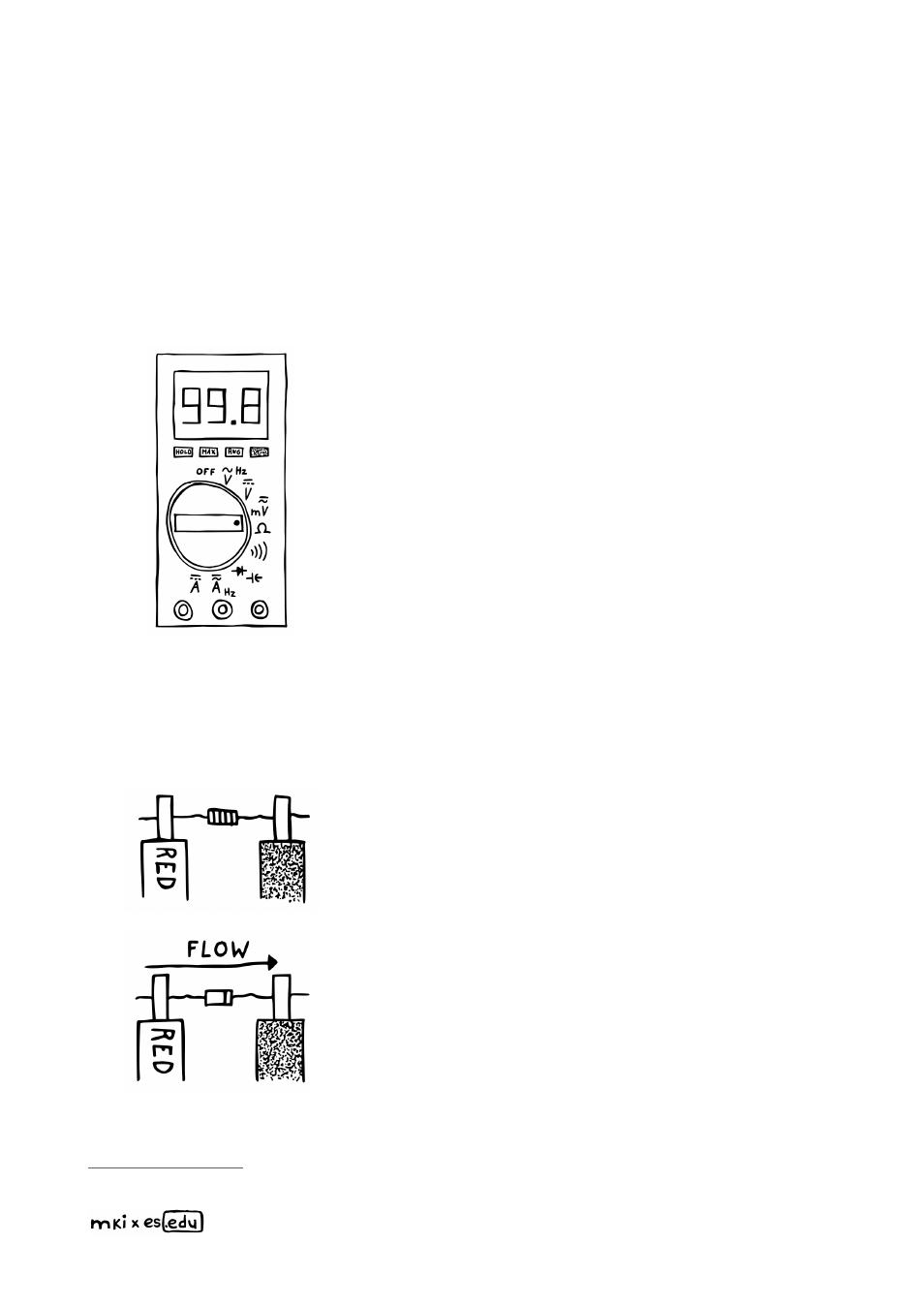Tools appendix, Multimeters – Erica Synths EDU DIY Dual VCA Eurorack Module Kit User Manual
Page 44

TOOLS APPENDIX
There are two types of tools that will help you tremendously while designing a circuit:
multimeters
and oscilloscopes. In this appendix, we’ll take a quick look at each of these
and explore how you use them.
MULTIMETERS
Multimeters come in di
ff
erent shapes and sizes, but the
most common type is probably the hand-held, battery
powered variant. These can measure a bunch of
di
ff
erent things: voltage, current, resistance, continuity.
Some have additional capabilities, allowing you to
check capacitance, oscillation frequency or the forward
voltage drop of a diode.
When shopping for one, you’ll probably notice that there
are really expensive models boasting about being TRUE
RMS multimeters. For our purposes, this is really kind of
irrelevant, so don’t feel bad about going for a cheap
model!
Using a multimeter is actually really straightforward. Simply attach two probes to your
device – the one with a black cable traditionally plugs into the middle, while the red one
goes into the right connector. Next, find whatever you want to measure and select the
corresponding mode setting.
In some cases, it doesn’t matter which probe you
connect to which component leg or point in your circuit.
This is true for testing resistors, non-polarized
capacitors (foil/film, ceramic, teflon, glass etc.),
continuity or AC voltage.
In others, you’ll have to be careful about which probe
you connect where. For testing the forward voltage drop
of a diode, for example,
the multimeter tries to push a
current from the red to the black probe
. Here, you’ll
have to make sure the diode is oriented correctly, so
that it doesn’t block that current from flowing. For
testing a DC voltage, you want to make sure the black
probe is connected to ground, while you use the red
one to actually take your measurement.
Just a fancy word for saying that two points are electrically connected.
44
